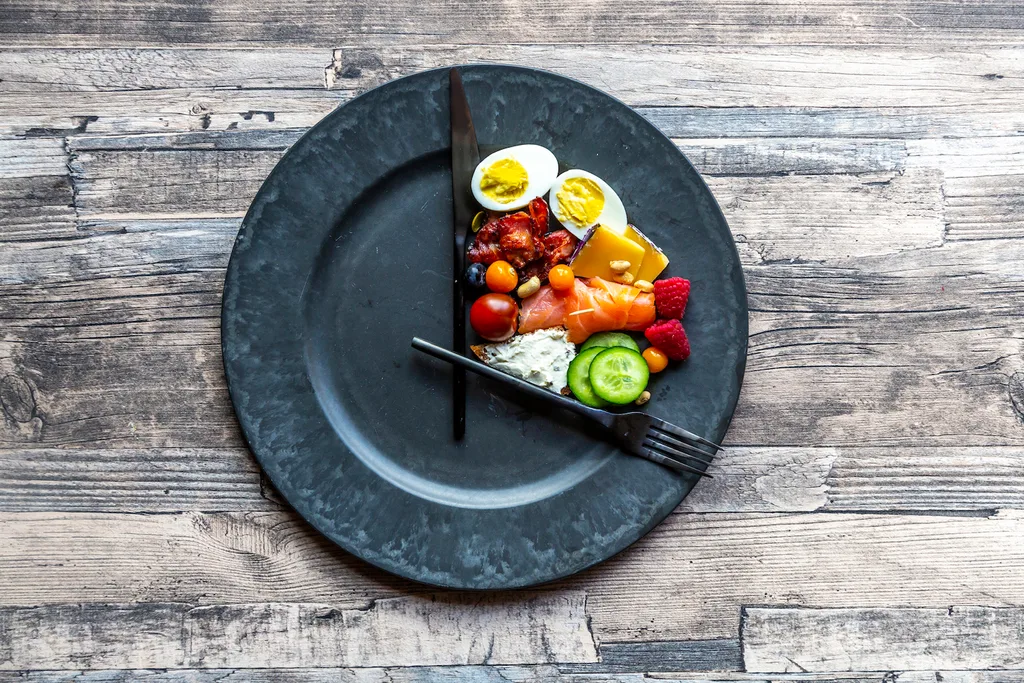By now you’re probably familiar with the 5:2 diet. You’ve either tried it or know someone who has. But have you heard of the 4:3 Diet – otherwise known as the Every-Other-Day Diet?
The creator, Krista Varady, has a PhD in Nutritional Science, and after finding herself in the obese category after giving birth to her first child she knew something had to change. Her old eating habits weren’t serving her.
Varady had been working on the Every-Other-Day Diet as a scientist for years, so, after finding herself overweight for the first time in her life, she decided to try it for herself.
“I’ve conducted seven clinical trials involving nearly 400 people,” says Varady. “My studies have shown again and again, that the Every-Other-Day Diet works.”
The people in her studies lose weight. “And in my ongoing, three-year-study on weight maintenance sponsored by the National Institutes of Health, EOD dieters are keeping the weight off.”
How the 4:3 diet works
Similar to the 5:2 Diet – where you eat normally for 5 days then restrict your calories to 500 (women) or 600 (men) on the remaining 2 days* – the 4:3 takes a ‘feast and fast’ approach. (And similar to the SIRT diet, it involves periods of restrictive eating.)
Four days a week you eat normally, then the other three you limit your intake to 500 calories per day. Varady co-authored a 2014 book with Bill Gottlieb, The Every-Other-Day Diet which includes detailed scientific evidence as well as meal plans and shopping lists about the 4:3 Diet.
(*The 5:2 used to be restricted to 500 calories on the two days of “fasting” but that was increased after Dr Michael Moseley discovered research that showed increasing your intake to 800 calories offered the same benefits.)
Varady said she was initially unsure consuming just 500 calories per day would be too intense while caring for a newborn baby.
“To my surprise, after a week of alternate day fasting, I felt great!” she said.
“I had plenty of energy and my mood improved considerably. In addition, I started losing about 1 pound (0.45kg) per week. It was terrific! I continued this fasting regimen until I reached my goal weight (it took about 12 weeks), then I returned to my usual eating habits.”
Has the 4:3 diet worked for other people, too?
We spoke to Aja James, a woman who’s followed the 4:3 diet and lost 14kg in nine months.

Why I switched from the 5:2 Diet to the 4:3
- Name: Aja James
- Starting weight: 87kg
- Current weight: 73kg
Aja James, 39, started her weight loss journey following the 5:2 Diet but realised part way into it that she needed a boost.
“The 5:2 was going really well but sometimes having a four day period without fasting would then make it hard to fast the following week,” says James. “I also wanted to increase the rate of my weight loss so I changed to 4:3.”

Why did you choose the 4:3 Diet?
“Intermittent fasting has a lot of scientific research backing up its results for improved health, particularly in relation to diabetes, and for weight loss. I’m heading towards 40, I had gestational diabetes during both my pregnancies, (which puts me at high risk for Type 2 diabetes), and my partner and I were both above our healthy weight zone.
“All of these factors sent us looking for a sensible approach to improving our health – something we could stick to and support each other through.”
Did you have any concerns before starting the diet?
“I was really concerned about headaches and loss of energy before I started, but found the first few fasting days were actually much easier than I expected. Lack of energy is sometimes still an issue, but I very rarely have any headaches while fasting.
“I definitely miss food on the fasting days but the advantage of these style of intermittent fasting diets is that you just need to make it through a 24-hour period, and then you can eat normally the following day.”
What do you eat on your fasting days?
“For the first few weeks, to ease myself in, I used meal replacement shakes. This made it easier to track calories and it took away the temptation of snacking.
“Now, most fasting days my partner and I both skip breakfast, then have a 200-300 calorie vegetable based meal at lunch (a salad with protein, vegetable soup, etc) then another small meal in the early evening.”
Do you find it hard to stick to the 4:3 diet?
“Some days are easy – the busier you are, the less time you have to think about food and being hungry. Other days are so, so hard! One thing that we’ve found challenging is making sure that we are setting a good example for our two young children so that they grow up with a healthy relationship with food.
“We really had to think about how to explain our new style of eating to them in a healthy and food positive way. We have also been exercising consistently throughout our time on the 4:3 diet.”
Did you ever break the diet?
“All the time! There are days when you just need more energy than 500 calories will give you, and working in 3 days a week of fasting around a busy calendar of work, family life and special occasions can be hard.”
Did you achieve what you set out to achieve?
“Not yet, but we are well on the way.”
Did you have any negative experiences?
“Fasting can be hard but having a support person makes it easier. One trap we discovered is that we would over indulge the day after a fast, because we were hungry and felt we deserved a treat (or three!). For this eating plan to work you need to be sensible on non-fasting days.”
Do you have any tips for people who want to try it?
“Make sure you have a good support person – it makes it so much easier. I also recommend using an app to track your calories. Whenever we became lax about tracking our calories we slipped into too much snacking and the results weren’t as strong.”
Will you continue on the 4:3 Diet in the future?
“We both intend to continue until we reach our goal weights, then we will still fast 1 day a week for the foreseeable future to maintain our health.”











